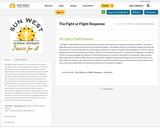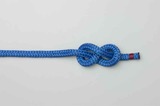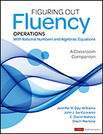
Harry Kindergarten video contrasting fiction and nonfiction in simple terms
- Subject:
- English Language Arts
- Material Type:
- Lesson
- Author:
- Kathryn Foss
- Date Added:
- 11/07/2018

Harry Kindergarten video contrasting fiction and nonfiction in simple terms

This task allows students to relate addition and subtraction problems to money in a context that introduces the concept of scarcity.

Insect scouting information at your fingertips. This guide is full of great images and practical tips that will help you:
Identify and manage insect pests and identify and protect beneficial insects.
This unique insect guide links the pests that can damage your crops to the predators that help to control them. You’ll want to access this valuable tool while scouting your fields this season.

An overview of Field IQ Flow and Application Control System.

This is a series of five activities about geology on the moon. Learners will explore lunar stratigraphy (caused by lava flows), impact craters, the moon's history, spacecraft design in which students build models of the LRO out of edible or non-edible materials, and the future of lunar exploration. This guide includes the activities from the original Field Trip to the Moon guide plus activities relating to these two moon missions - Lunar Reconnaissance Orbiter and the Lunar Crater Observation and Sensing Satellite.

This site will give you a quick run down of how to use Figjam and then it provides 20 great ideas for using Figjam in the classroom - including the templates to get started!
There is even a video to keep it very easy!
Tutorials are linked at the bottom of the site as well.

This lesson describes the major components and functions of the immune system and the role of engineers in keeping the body healthy (e.g., vaccinations and antibiotics, among other things). This lesson also discusses how an astronaut's immune system is suppressed during spaceflight due to stress and other environmental factors.

Students study an ancient bronze statue, analyze its pose, and discover how conservators remove and prevent corrosion. They learn that the bronze used to make this sculpture is an alloy of copper and tin with small amounts of antimony, lead, iron, silver, nickel, and cobalt. They use the periodic table to research the chemical formulas of compounds used to make bronze. After learning about oxidation-reduction reactions that occurred in the statue, students speculate about the conservation techniques needed to conserve the bronze sculpture.

Students study an object from antiquity that was found in the sea off the coast of Italy in order to understand how conservators remove and prevent corrosion on bronze statues. They derive meaning from analyzing the pose of the statue. Based on what they observe in the sculpture and what they read about the statue, students speculate about how the sculpture was lost at sea.

Students study an ancient bronze statue, analyze its pose, and discover how conservators remove and prevent corrosion. They learn that the bronze used to make this sculpture is an alloy of copper and tin with small amounts of other elements. They use the periodic table to research the chemical formulas of compounds used to make bronze. Students compare conservation techniques in two ancient bronze objects.

Social injustice occurs every day all over the world. In this lesson, students research a few historical examples of social injustice, including the Holocaust, the Trail of Tears, and Japanese internment.

The Fight or Flight Response is an automatic brain response your body has to a perceived dangerous situation. The Fight or Flight Response’s purpose is to protect you from potential danger. The problem, is that it is a primitive response and often the world we live in now does not have the same dangerous situations as when this response first developed in our brains. We no longer have the threat of wild animals, however, the threat of writing a test or exam, or handing in an assignment, or speaking in front of a group of people still continues to illicit the same physical reaction in our brain for some people. When a person feels threatened, the fight-or-flight response is automatically triggered, and the body changes that occur still prepares us to either ‘fight’ the threat, or ‘flee’ the threat (even though it is impractical to ‘flee’ from an assignment) the brain response is the same as if it was a wild animal. The resource includes what it is and how to manage it.

The Figure 8 Knot(ABOK # 570, p 95.) provides a quick and convenient stopper knot to prevent a line sliding out of sight, e.g., up inside the mast. Its virtue is that, even after it has been jammed tightly against a block, it doesn’t bind; it can be undone easily. This virtue is also, occasionally, a vice. The Figure 8 Knot can fall undone and then has to be retied.

Figure This! Math Problem Solving Challenge for Families

This site offers 4 free math activities to assist students with increasing their fluency in operations with rational number and algebraic equations. The activities include:
Activity 7.7: "Would You Rather..." Routine
There are two versions of this routine with systems of linear equations—choosing different strategies (e.g., Use Tables or Use Graphs) and making choices within a strategy (e.g., For which variable will I substitute? Or Which variables will I eliminate?).
Activity 6.10: The Transformer Game
This game is a fun way to give students opportunities to choose and use different basic transformations to start solving equations.
Activity 5.7: Worked Examples For Ratios and Proportions
Use this activity for worked examples for ratios and proportions. Correctly worked examples and partially solved worked examples benefit students so that they can understand strategy.
ACTIVITY 4.11: Quotient Connect Game
This game is an engaging way to practice division using Partial Quotients. It is played similarly to the classic board game Boggle as students find quotients through connected digits.

Today we’re going to look at how our computers read and interpret computer files. We’ll talk about how some popular file formats like txt, wave, and bitmap are encoded and decoded giving us pretty pictures and lifelike recordings from just strings of 1’s and 0’s, and we’ll discuss how our computers are able to keep all this data organized and readily accessible to users. You’ll notice in this episode that we’re starting to talk more about computer users, not programmers, foreshadowing where the series will be going in a few episodes.

This short video and interactive assessment activity is designed to teach third graders about filling in the missing number to balance the equation.

This short video and interactive assessment activity is designed to teach third graders about filling in the missing + or - sign.

Discover Saskatchewan—from its big cities and rural areas to its small towns and remote communities—through a selection of films that shines a spotlight on the province’s hidden treasures and fascinating characters. Suitable for both primary and secondary level students, this playlist includes animated and documentary films. These seminal works from our collection address the topics that matter most, ranging from historical subjects to the most pressing issues of the day.

« Suivez le filon de l'histoire des mots! Jouez avec la racine des mots et visionnez des vidéos pour mieux comprendre des concepts en histoire...
Avec ses 30 racines illustrées, ses 10 vidéos ludiques et ses activités variées, la ressource Filon vise à familiariser les étudiants et étudiantes avec les racines des mots et à favoriser une meilleure compréhension de concepts courants dans la discipline histoire, et en sciences humaines plus généralement.
Filon s’organise autour de quatre terrains de jeu »:
-Former des mots (découvrir les 30 racines communes)
-Découper des mots (reconnaître les racines dans des mots proposés)
-Visionner des vidéos (l'évolution historique de certains mots)*
-Trouver les mots (décliner les termes vus et chercher d'autres)
*Une des vidéos traite de l'histoire coloniale et ainsi de l'étymologie de certains termes parmi la multitude de mots autochtones qui ont infiltré les langues européens.
Les matériaux sont aussi disponibles sous form de documents téléchargeables.
« Étudier l’étymologie, c’est étudier l’histoire, et étudier l’histoire, c’est étudier les mots.»